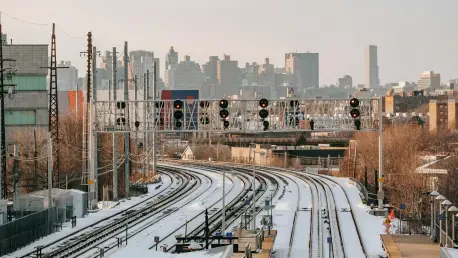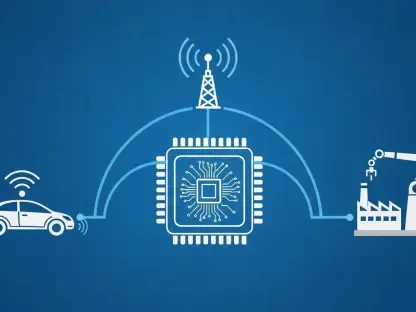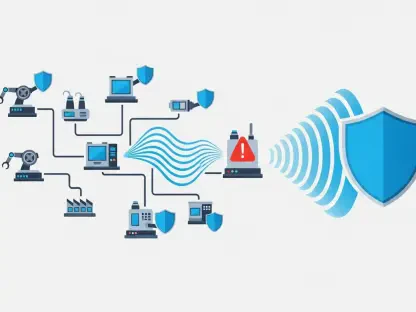In an era where digital transformation is reshaping industries at an unprecedented pace, the rail sector stands at a critical juncture, balancing the demands of safety, efficiency, and innovation to meet the needs of millions of passengers worldwide. A groundbreaking partnership between a leading telecommunications technology provider and the organization responsible for managing the Netherlands’ national railway infrastructure has emerged as a beacon of progress. This collaboration has resulted in the deployment of a cloud-native Global System for Mobile Communications for Railway (GSM-R) core network, marking a historic first in the rail industry. This initiative not only modernizes existing wireless communication systems over a multi-year project but also sets a foundation for future advancements, ensuring enhanced reliability and operational efficiency. By embracing cutting-edge technology, this effort promises to redefine how railway communications support safe and seamless travel across vast networks.
Modernizing Railway Communications for Safety and Efficiency
The core of this transformative project lies in upgrading the wireless communication infrastructure that underpins railway operations in the Netherlands. By transitioning to a cloud-native GSM-R core network, the initiative aims to extend the lifespan of the current 2G-based system, significantly reducing downtime and lowering long-term ownership costs. Advanced solutions such as the Cloud Platform, Packet Core components, Assurance Center, and sophisticated network management tools like MantaRay NM and Archive Cloud are being integrated to enhance real-time data exchange. This modernization effort ensures that critical voice and data functions, essential for train control and operational safety, are more robust and responsive. The focus on minimizing disruptions while maximizing efficiency reflects a deep commitment to improving the travel experience for millions of passengers who rely on these systems daily, setting a new standard for reliability in railway communications across the region.
Beyond the immediate technological upgrades, this project addresses the broader goal of lifecycle management for railway communications. The migration to a cloud-native architecture offers unparalleled agility, enabling seamless integration of emerging tools and applications over time. This approach not only tackles current operational challenges but also prepares the infrastructure for inevitable advancements in the industry. By reducing dependency on outdated systems, the initiative curtails risks associated with aging technology, ensuring that safety remains paramount. Furthermore, the improved data capabilities facilitate better decision-making for railway operators, allowing for quicker responses to incidents and more efficient scheduling. This forward-thinking strategy underscores the importance of adaptability in an industry where passenger safety and service reliability are non-negotiable priorities, paving the way for a more resilient network.
Preparing for the Future of Railway Technology
A significant aspect of this collaboration is its alignment with the rail industry’s ongoing digital evolution, particularly in Europe, where the transition from GSM-R to the Future Railway Mobile Communication System (FRMCS) looms on the horizon. GSM-R currently serves as the global benchmark for secure railway communications, supporting vital operations. However, FRMCS promises faster data transmission, improved integration with modern systems, and enhanced safety features. By adopting a cloud-native framework now, the project positions the railway network to explore synergies across applications and simplify the adoption of next-generation technologies. This strategic move ensures readiness for FRMCS, minimizing potential disruptions during the eventual shift. It reflects a proactive stance in embracing innovation while maintaining the integrity of existing systems critical to daily operations.
Equally important is the long-term vision embedded in this initiative, as it sets a precedent for other rail operators navigating similar transitions. The adoption of cloud-native technology addresses immediate needs for service reliability while strategically planning for adaptability over the coming years. This balance between maintaining current operations and preparing for future demands offers valuable insights for the global rail community. Industry leaders have noted that such modernization efforts secure GSM-R functionality for at least another decade while laying the groundwork for emerging standards. The project’s emphasis on sustainability and efficiency also aligns with broader goals of enhancing mobility through technology. By serving as a model for integrating advanced solutions, this effort highlights how digital transformation can harmonize with the rail sector’s unique challenges, ensuring safer and more efficient travel for future generations.
Reflecting on a Transformative Milestone
Looking back, the partnership between these two entities achieved a remarkable feat by successfully deploying a pioneering cloud-native GSM-R core network, setting a historic benchmark in railway communications. This endeavor not only revitalized critical infrastructure but also ensured heightened safety and operational reliability for countless passengers. The integration of innovative technologies demonstrated a nuanced balance between preserving existing systems and embracing future-ready solutions. As a result, the project established a clear pathway for other rail operators to follow, showcasing the potential of cloud-native architectures in mission-critical environments. Moving forward, the focus should remain on scaling such initiatives globally, prioritizing investments in digital tools that enhance safety and efficiency. Exploring collaborative frameworks to share best practices will be crucial, as will continuous monitoring of emerging trends like FRMCS to stay ahead of industry shifts, ensuring that railway networks remain at the forefront of technological progress.









